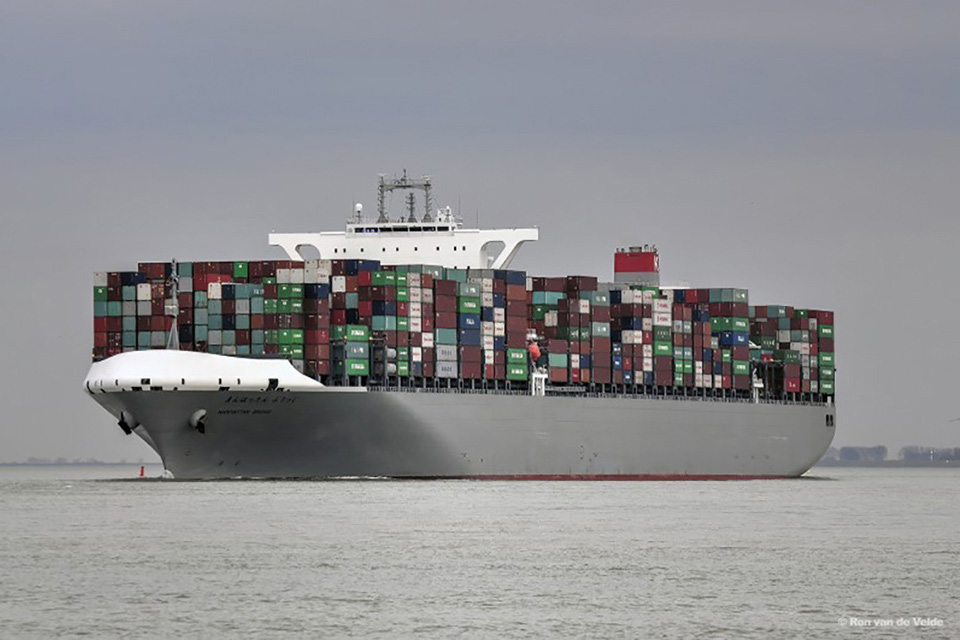Safety warning after explosion on container vessel Manhattan Bridge results in 1 fatality and 1 serious injury
Location: Felixstowe container terminal, England.
Safety Bulletin 1/2017

Image: Ron van de Velde
Summary
An engine room oiler suffered fatal injuries and the second engineer suffered severe burn injuries when a furnace explosion occurred on the vessel’s auxiliary boiler. The oiler and engineer were attempting to restart the boiler after it had suffered a flame failure cut out.
The boiler had tripped out several times due to flame and ignition failures earlier in the day and had been successfully restarted by the second engineer.
Following the accident, waxy deposits, sufficient to cause intermittent fuel supply problems, were found in the boiler’s distillate fuel supply filter.
Fuel samples tested against the latest international marine fuel quality standard identified that wax crystals large enough to block the filters could start to form in the fuel at a temperature of 14°C or below. The air and sea temperature at the time of the accident at Felixstowe was 4°C. The fuel, which was loaded on board 2 months earlier, had been tested against an older version of the fuel quality standard. The older standard did not include a test to identify cold filter plugging points.
The requirement to comply with increasingly stringent low sulphur emission regulations in sulphur emission control areas (SECAs), such as the North Sea, has increased demand for low sulphur marine gas oils (MGOs). Some low sulphur MGOs have a higher paraffin content and are therefore more susceptible to waxing in cold conditions.
The Japan Transport Safety Board (JTSB) is conducting an investigation of the accident and will produce a report in due course.
Safety issues
-
Some low sulphur distillate fuels have a high paraffin content and are therefore more susceptible to waxing at low temperatures
-
Waxing in fuels can cause filter blockage and combustion problems
-
It is essential that vessel operators carefully consider expected ambient air and sea temperatures when purchasing low sulphur marine gas oil
-
When operating in cold climates, the visual appearance of distillate fuels should be closely monitored to identify signs of waxing. The first indication will become evident when the fuel reaches its cloud point temperature; the fuel will become hazy or cloudy
-
Maintaining the temperature of the fuel above its cloud point will prevent waxing
-
The use of cold flow improver chemicals should only be used as a last resort to address the problem once it has arisen, not as a preventative wax control measure
Related publication
A full report by the Japan Transport Safety Board has also been produced for this accident.